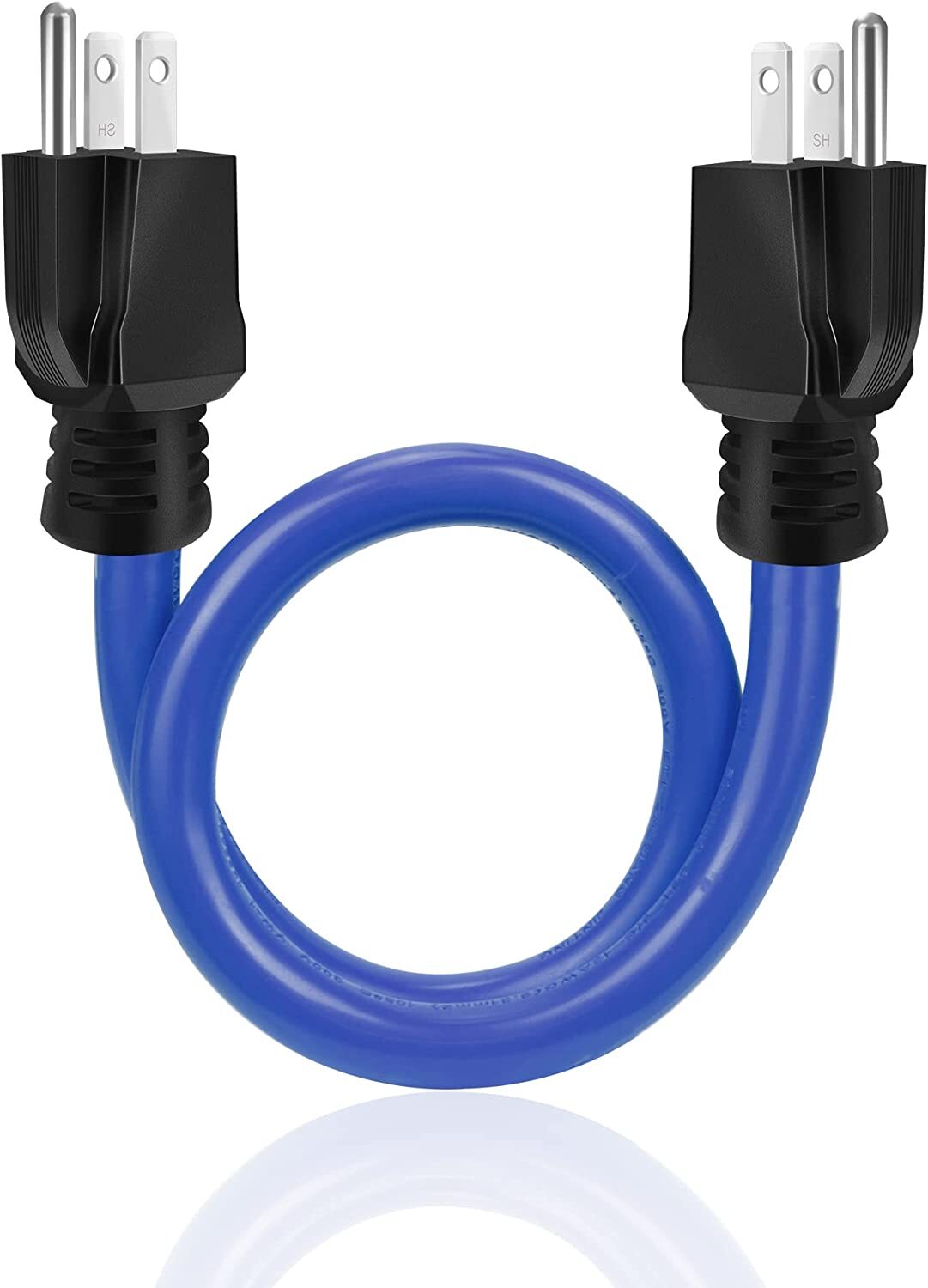
This cable, in the wrong hands and wrong situation, could kill you, or endanger your home. (via Amazon)
Far be it from me to suggest that certain dongles are a bad idea, but when the U.S. Consumer Product Safety Commission is speaking up, I guess I have to point out the problem.
Simply put, the nature of cheap manufacturing has allowed for the rise of obscure types of connectors to be used for basically anything. One said obscure type of connector is called a male-to-male extension cord, and is essentially a cable with plugs on either side of its connection.
These cables are most effective for one specific use case—situations in which you need to plug a generator into an electrical outlet as back-feed, essentially allowing the generator to continue to power your home through electrical outlets.
The CPSC points out that this is a stupid idea, however. In a recent press release, the commission put the situation like this:
When plugged into a generator or outlet, the opposite end has live electricity posing a risk of serious shock or electrocution. Additionally, the flow of electric power in the direction reverse to that of the typical flow of power circumvents safety features of the home’s electrical system and can result in a fire. The short length of some of these cords also encourages use of a generator near the home, which could create a risk of carbon monoxide poisoning. Furthermore, these cords do not comply with applicable national safety codes, such as National Fire Protection Association 70 (NFPA 70).
Essentially, plugging in one of these cables encourages people to do stupid things in the name of trying to power their homes during a rare power outage.
This cable has a colloquial name that CPSC didn’t use, but I have no issues with using—it is a “suicide cord,” because it can literally kill you or burn your house down because you are literally exposing live electricity via metal prongs. As certain sites explain online, the safest way to use one of these devices, if you must, is to shut off the main power, which prevents the generator’s power from going out to the main grid, and by only turning on breakers you plan to use, carefully, removing any objects that might overpower the system.
But even then, it is not the smartest of ideas. The YouTube home enthusiast channel Stud Pack points out, correctly, that there are some useful situations where you would want to plug a generator into a wall this way, particularly in states such as Louisiana, which frequently see tropical storms.
But just because you might want to plug a generator into your electricity system doesn’t mean the best way to do so is via a male-to-male cable.
Paul Selleck, the primary host of the successful channel, makes the case for 1) using a specialized connector that can plug directly into the wall for air conditioning, and 2) replacing the female connector on the wall with a male connector, which helps prevent the cable from spouting off live electricity.
(Notably, the house featured in the clip uses a lockout on the circuit breaker, making it so you literally cannot use the generator power without turning off the main power at the same time, something emphasized for safety.)
In some ways, the CPSC’s argument points out how products like cables are often sold online without a lot of thought as to their long-term safety. People who don’t have Selleck’s electrical know-how are buying these things as a shortcut, and potentially endangering themselves in the process.
Before buying something on Amazon of this nature, maybe do your research first. Manufacturers don’t have the same motivations you do.
Time limit given ⏲: 30 minutes
Time left on clock ⏲: 41 seconds



